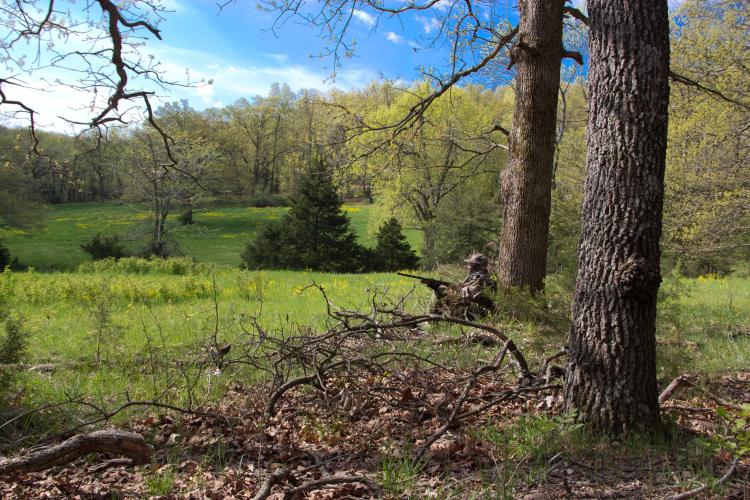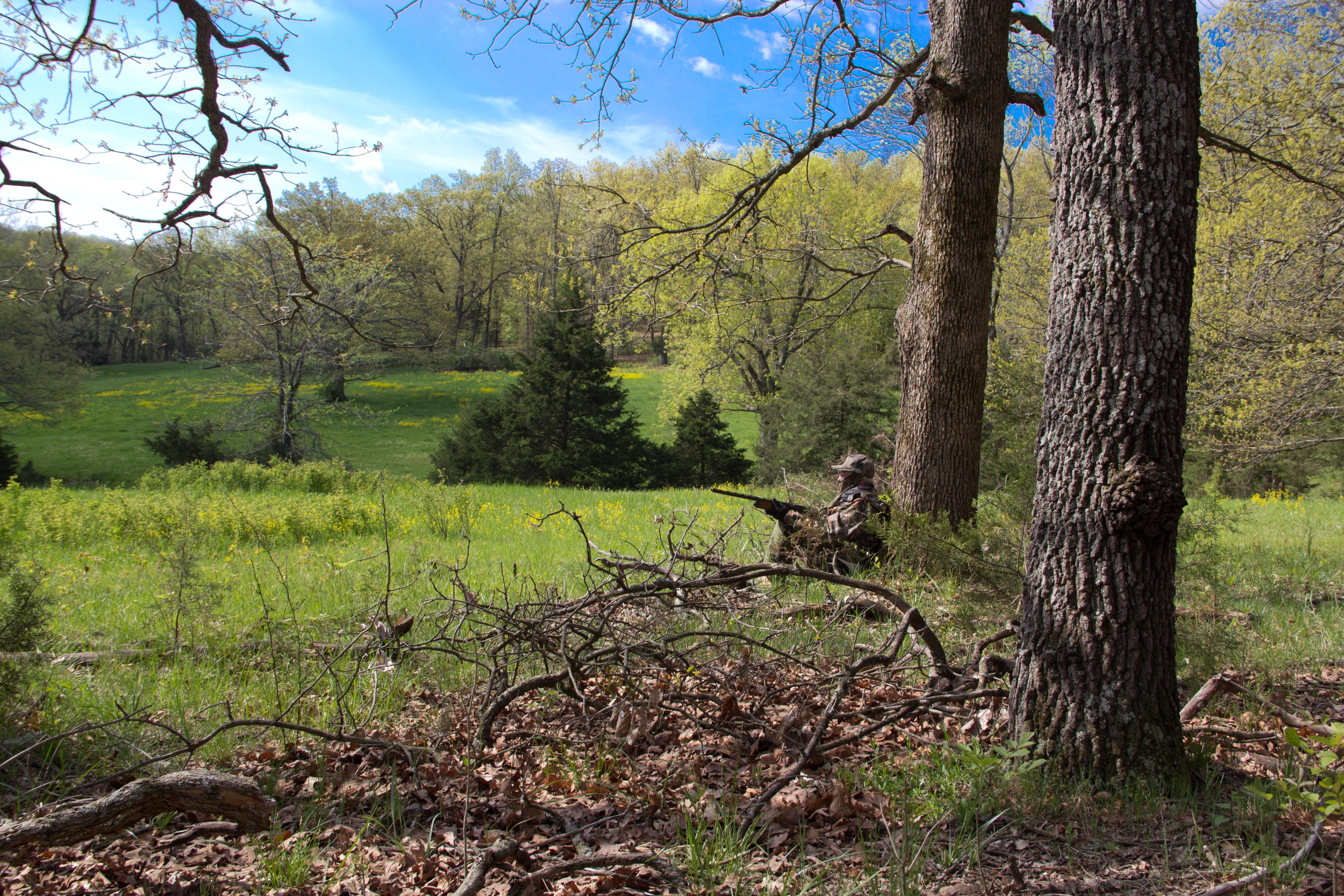
Xplor reconnects kids to nature and helps them find adventure in their own backyard. Free to residents of Missouri.


































Stay in Touch with MDC news, newsletters, events, and manage your subscription

Xplor reconnects kids to nature and helps them find adventure in their own backyard. Free to residents of Missouri.

A monthly publication about conservation in Missouri. Started in 1938, the printed magazine is free to residents of Missouri.




CROCKER–The history of turkey hunting in Missouri has been chronicled in books, magazines, and newspapers, but for capturing the excitement of the early years and the progress made, it’s hard to beat spending a morning with Jim Greenstreet.
Greentstreet was 25 years old in 1960. He and his father, Dave Greenstreet, bridged a historic gap of sorts that year.
“When my dad came home from the army in 1919, his dad told him to go out and kill a turkey for Thanksgiving,” Jim remembers. “He said there were three gobblers, and he told him where they were, and he killed one right off the roost for Thanksgiving dinner.”
Not many years after that, the elder Greenstreet might have thought he had killed his last turkey. By the middle of the 20th century, Missouri’s entire wild turkey population was estimated at 2,500 birds. In 1938, about a year after Missourians created the Conservation Department, the agency declared a closed season on turkey hunting. But by 1960 the combined efforts of citizens – including Dave Greenstreet and his neighbors in Pulaski County – had brought wild turkey numbers back to the point where the Conservation Commission opened a three-day season in 14 counties, including Pulaski.
Jim Greenstreet and his dad were among the hunters who took part in that first turkey season of the modern era. Jim has hunted in each of Missouri’s spring turkey seasons since then.
Hunters have always been storytellers. For early humans, it was a matter of survival. Hunting lore was the library of knowledge needed to obtain animal protein, furs, and other essentials of survival. And while few hunters today depend on hunting for survival, the need to tell hunting stories remains imprinted in our DNA.
If stories are the common currency of hunters, Jim Greenstreet is one of the richest turkey hunters in Missouri. He has a story for every occasion. Among the earliest are his recollections of how folks around his birthplace in Pulaski County preserved remnants of Missouri’s once-abundant wild turkey flock.
“That was the old, native turkeys, says Greenstreet. “They never were killed out here in Pulaski County. There weren’t many, but the old farmers protected them. They shot a few, but they always had turkeys. The neighbors all made a pact to save them.”
A hunt with Greenstreet in his old home area is a narrated walk through history. Standing in the gray dawn of what would be a warm, sunny day, he and I waited for gobblers to betray the locations of their roosts. We heard nothing for a long time. The protective cover of night was fading, so Jim hooted on a wooden owl call and got a rise out of four gobblers at various distances and directions.
With intimate knowledge of the terrain, Jim knew that the nearest gobbler was roosted near the edge of a small ridge-top pasture about 300 yards away. If he flew down into that field and stayed put, he would be unapproachable. But all the other active gobblers were much farther away, so we decided to try to persuade the ridge-top tom to come down off his ridge.
To get a shot at him, we would have to call the imperious bird down into a pasture and then up through open woods. We took seats against oak trees on a wooded slope facing the gobbler’s fortress and donned camouflage face masks and gloves. Our position gave us an excellent view of the field of battle, but it was a long way to call a grizzled veteran of the turkey wars.
He flew down into the field 400 yards distant and gobbled intermittently for a while. Although the gobbler never responded directly to the plaintive yelps from Jim’s box call, it did come down off the hill. Our hopes soared.
When he came into view, the gobbler was following two hens. Parading across the lush pasture with his bronze plumage puffed up, he looked like a battleship cruising on a green sea. The hens, typically aloof, took no notice of the gobbler’s exertions. They loitered briefly to catch a few bugs, then wandered off to the south, presumably to deposit eggs in their respective nests.
Watching them depart, the Gobbler deflated like a punctured bagpipe. At that point, we hoped he would show an interest in Jim’s calling. Instead, he folded the fan of his tail and marched back up to his unassailable perch in the hilltop meadow. There he stayed, gobbling at odd intervals but still not dignifying our best calling efforts with a response.
Undaunted, Jim went back to owl hooting and located a more responsive gobbler not far away. We spent the next hour and a half stalking as near to our new quarry as we dared, then trying to call him through a wooded draw. The bird yo-yoed between 200 and 100 yards but never left his field or showed himself. A battalion of ticks ended that engagement, and we retreated to higher ground to salve our wounded pride with venison sausage and crackers.
The late morning and early afternoon was only a delaying action. But every fence, woodlot, and tree we saw evoked a memory from Jim’s 53-year turkey-hunting career. He pointed out the first pond ever built in his neighborhood with the help of the Soil Conservation Service. Not far away, we sat down to call turkeys at the foot of pine trees that he and his 4-H club planted. Some of those trees now are 18 inches in diameter. A spring breeze soughing through their boughs creates a lullaby that even a tick-bitten hunter can’t resist.
My personal favorite of the stories I heard that morning was about the Remington 870 Jim hunts turkeys with. The gun once belonged to a hunter who missed two turkeys before abandoning the gun in the woods, saying it wouldn’t kill anything. Jim retrieved the 12 gauge and has repeatedly disproved the accusation of its former owner.
Although Greenstreet now lives in Springfield, he does most of his turkey hunting in his childhood haunts of Pulaski County. Not only has he hunted in 53 consecutive turkey seasons, he also has hunted on opening day in his old home area with the same hunting buddy since 1978. He says he used to arrive in the woods “early.” Nowadays, he’s content if he gets there before the last whip-poor-will stops singing. That would qualify as early for most people.
“The good Lord’s been really good to me,” says Greenstreet. “What are the odds of me getting to be out here every year for more than half a century? I mean, think about it. Maybe a kid would be sick, or you’d be fightin’ with your wife, or somebody would be dead or something. I’m very blessed.”
-Jim Low-